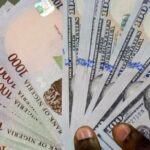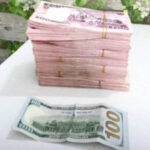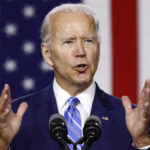The dollar fell toward multi-year lows against most major currencies on Tuesday as the Federal Reserve’s new policy framework continued to fuel bets that U.S. rates will stay lower for longer than other countries.
The Australian dollar held around a two-year high against the greenback as traders wait for news from a Reserve Bank of Australia (RBA) policy meeting later on Tuesday to gauge policymakers’ views on the economy.
Dollar Steady Though Economic Worries Grow
Operators Decry 400% Rise In Freight Rate
The yen was hemmed into a narrow range as politicians jockeyed to choose a new premier following Prime Minister Shinzo Abe’s shock resignation last week.
The U.S. data calendar this week is full of important releases on manufacturing, durable goods and employment, but positive results are unlikely to halt the dollar’s decline due to strong expectations that rates will remain extremely low.
“The dollar is weak, not only against G10 currencies but also against emerging market currencies,’’ said Minori Uchida, head of global market research at MUFG Bank in Tokyo.
“This shows the dollar is in a downtrend that will last for some time.
“Low rates and an excess supply of dollars are driving this move.’’
Against the euro EUR=D3, the dollar fell to $1.1973 on Tuesday in Asia to reach its lowest since May 2018.
The British pound GBP=D3 rose to $1.3402, the highest since December last year, after Japan’s foreign minister said a broad agreement on a Japan-UK trade deal is close.
The dollar was quoted at 0.9021 Swiss francs CHF=EBS, just a shade above the lowest in more than five years.
The greenback eased slightly to 105.73 yen JPY=D3.
The Fed’s historic switch last week to focusing more on average inflation and higher employment means it has leeway to keep benchmark rates lower for longer, which has encouraged dollar bears to sell the currency.
A decline in long-term Treasury yields, on Monday, highlights the strong headwinds facing the dollar.
Data due later on Tuesday is expected to show that U.S. manufacturing activity continued to expand in August, but this may not be enough to change the negative sentiment surrounding the dollar, analysts said.
Against a basket of six major currencies, the dollar index slid on Tuesday to a two-year low at 91.947.
The yen was in focus as investors place bets on who will become Japan’s new prime minister.
The largest faction in the ruling Liberal Democratic Party has thrown its support behind Yoshihide Suga, who currently serves as Chief Cabinet Secretary.
Suga is a close ally of Abe and is likely to continue many of Abe’s policies if he becomes the new prime minister.
The Australian dollar AUD=D3 rose to $0.7398, close to its highest since August 2018.
The RBA is not expected to make any major changes at a policy meeting on Tuesday, but traders want to see how central bankers assess the economic outlook as the country grapples with a recent increase in coronavirus cases.
The New Zealand dollar NZD=D3 held steady at $0.6756, near its strongest in two years.
The onshore yuan CNY=CFXS surged to 6.8310, the highest in more than a year.
The dollar also fell broadly against other emerging Asian currencies, further underlining the greenback’s woes.
Some investors may turn cautious due to increasing tension between the U.S. and China in the run-up to this year’s U.S. presidential election in November.
The U.S. said on Monday it was establishing a new bilateral economic dialogue with Taiwan in a move that is sure to anger Beijing because China claims Taiwan as its own territory. (Reuters/NAN)

 Join Daily Trust WhatsApp Community For Quick Access To News and Happenings Around You.
Join Daily Trust WhatsApp Community For Quick Access To News and Happenings Around You.


